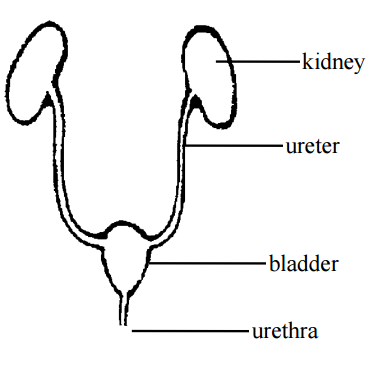Ureteral reimplant: Discharge instructions
What is a ureteral reimplant?
A ureteral reimplant is surgery to change the position of the ureters into the bladder. The ureters are the tubes that drain urine from the kidney to the bladder (see picture).

The surgery prevents reflux of urine from the bladder to the kidney/s OR relieves obstruction of the ureter as it enters the bladder. The surgery typically takes 1-2 hours. Depending on your child's condition and your surgeon's discretion, you may be able to go home the same day or will stay overnight. Most patients are able to go home the day following the procedure.
What can I expect after surgery?
The anesthesiologist and surgeon will prescribe and explain the medicines that will be used to keep your child comfortable.
A catheter (thin tube) will be inserted into your child's bladder during surgery to drain urine. Your child's urine color may be red or pink with a few blood clots. The urine will gradually become clear yellow. Blood in the urine is common and may come and go based on your child's activity and hydration. It is not concerning; however, notify your surgeon if your child has difficulty emptying the bladder due to large clots.
Sometimes bladder spasms can occur, especially during the first few days after surgery. Bladder spasms are a contraction in the bladder wall caused by any of the following:
- healing of the bladder wall incision
- catheter irritating the wall of the bladder
- kinked or blocked catheter (urine not able to drain out of the bladder)
- constipation
Bladder spasms, like muscle spasms, can be uncomfortable. They come and go often and usually last less than a minute. Medication
to relax the bladder will reduce the discomfort.
After surgery, your child will have an intravenous line (IV) to make sure he or she gets enough fluids. It may also be used to give medicines, such as pain relievers and antibiotics. The doctor will decide when the IV and IV medicines are no longer needed.
A pulse oximeter may be used to monitor your child's oxygen saturation while on IV pain medicines.
What can my child eat?
Your child should drink plenty of fluids as soon as he or she can. A nutritious diet will also promote healing.
How active can my child be?
Quiet activity will be encouraged for the first few days after surgery.
What else do I need to know?
See your Patient Discharge Summary sheet for specific instructions about pain control, bathing, caring for your child's incision at home, and when to see the surgeon again.
When should I call the surgeon?
- urinating less often than usual
- increased pain
- temperature higher than 102° F
- urine smells bad
- incision looks red or swollen
- pus or other drainage at the incision
Questions?
This sheet is not specific to your child, but provides general information. If you have any questions please call the clinic.
Children's Hospitals and Clinics of Minnesota
Patient/Family Education
2525 Chicago Avenue South
Minneapolis, MN 55404
Last reviewed 8/2015 ©Copyright
This page is not specific to your child, but provides general information on the topic above. If you have any questions, please call your clinic. For more reading material about this and other health topics, please call or visit Children's Minnesota Family Resource Center library, or visit www.childrensmn.org/educationmaterials.
© 2024 Children's Minnesota
